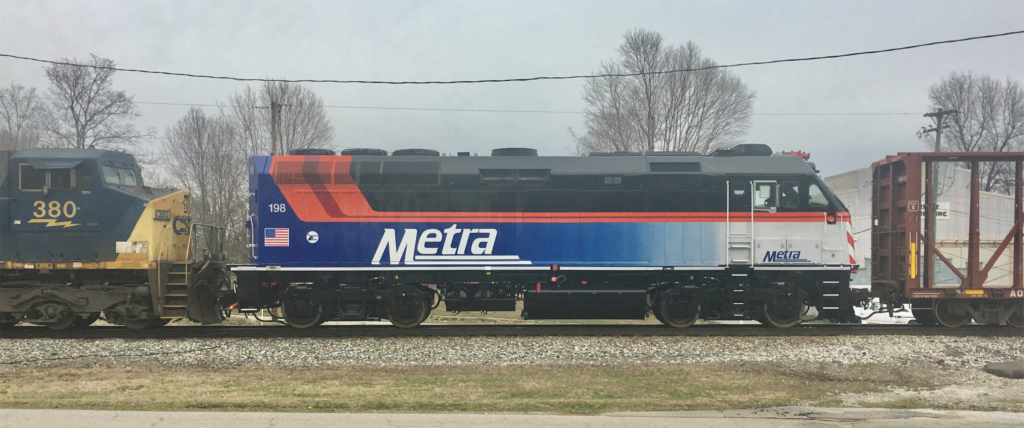

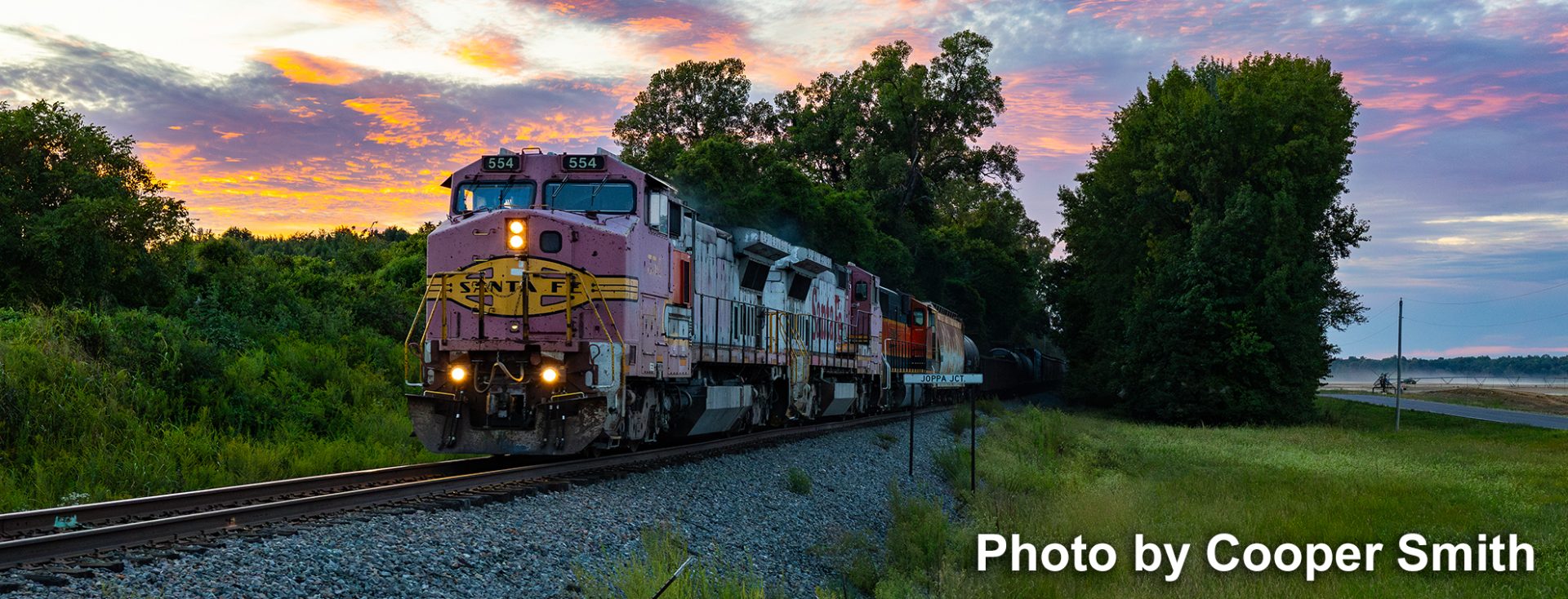


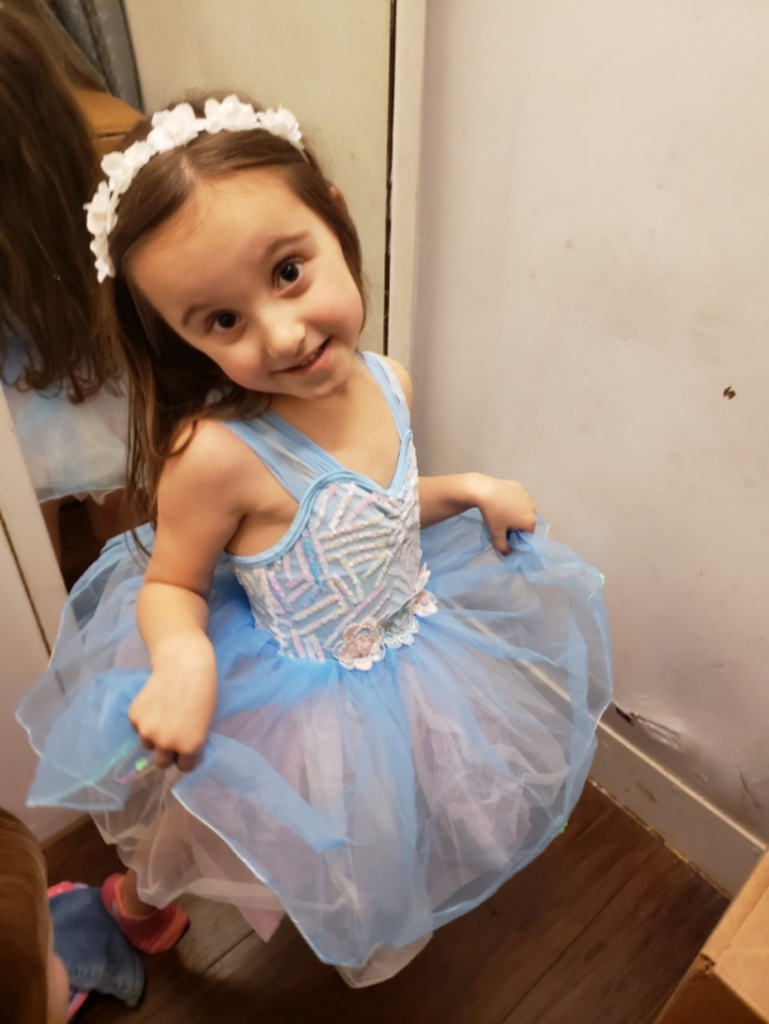

While dad Jonathon watches trains, daughter Harper practices her dance which happens to be at the dance school next to the railroad tracks in Madisonville.
Photos by Jonathon Young.
We had a total of nine entries for the January 2020 chapter photo contest and the chapter members selected the winners during our February meeting.
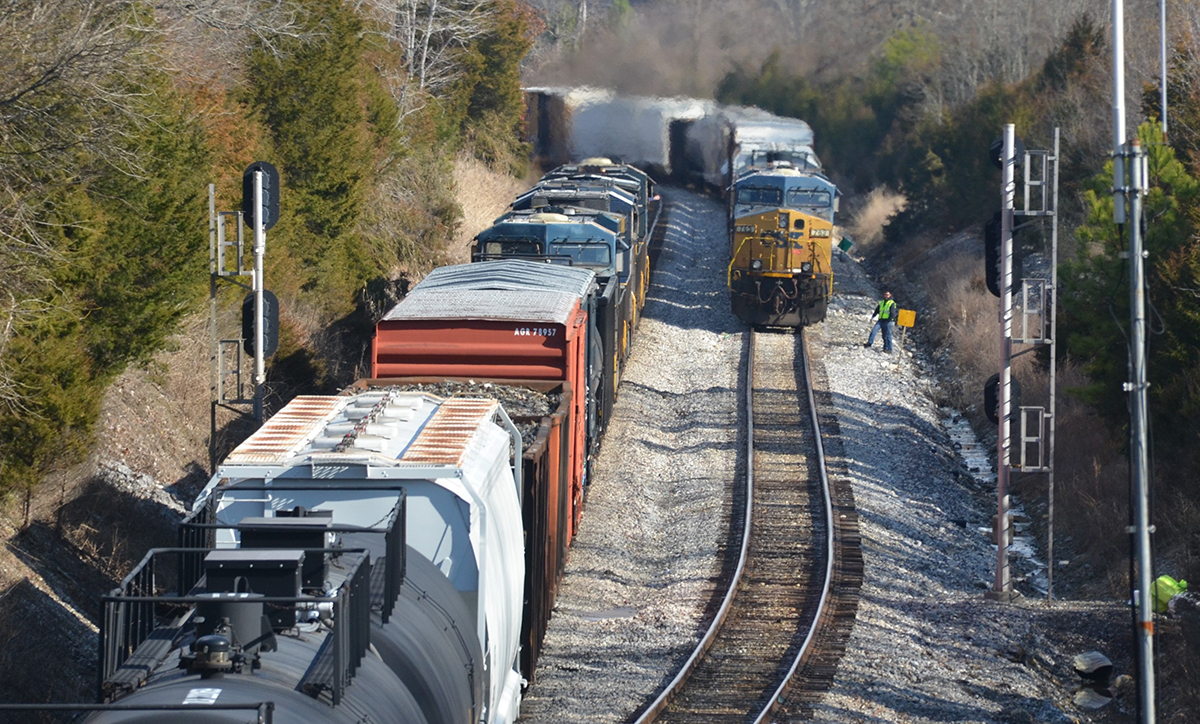
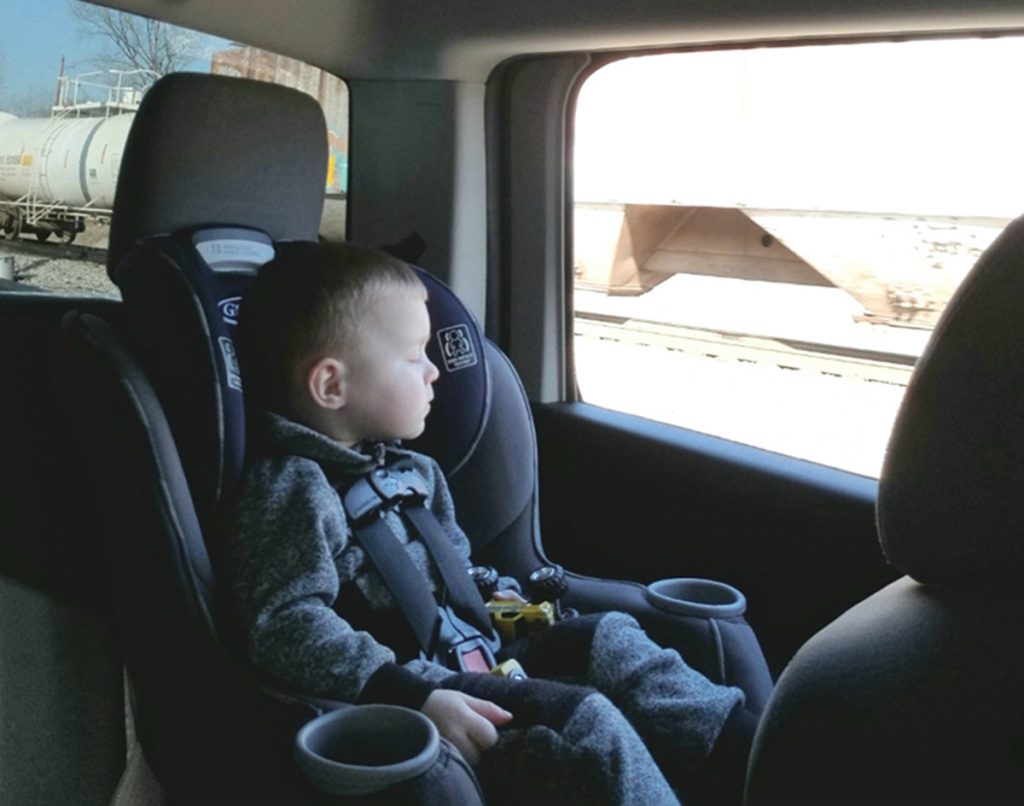
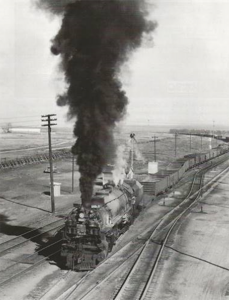
Another craft superseded by technology, automation: Switch-tenders and grade-crossing guards. The grade separation story about Oklahoma City last February included pictures of grade-crossing shanties. Some were rather elaborate, and a certain “ownership” was obvious. Note the Good-Luck horseshoe over the doorway in the picture above, along with the bench for outdoor comfort.
Many if not most of those positions were filled by employees injured on the job. These men were able to remain employed, and achieve their deserved retirement benefits.
The handy broom hanging on the wall does double duty, sweeping dirt out the door, and snow out of switch-points. Switch-Tenders received their instructions for routing incoming trains from the Yardmaster. They usually assisted the “herder” with departing trains.
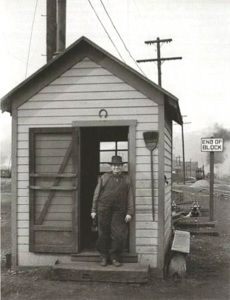
In my home-town, Tacoma, Washington, there was an elevated tower on the double-track that crossed Pacific Avenue, perhaps the busiest street in town. On double track these towers had to be high enough to monitor the movements on both tracks. For years the gentleman manning that tower had a warning system alerting him of snoopy inspectors. He used fish-line to serve as a trip-wire on the steps leading to this elevated tower, whereupon anyone coming up the stairs would jiggle tin-cans or bottles. That way he could wake-up, and/or quickly hide his bottle.
The switchman shanty at East End in the Cheyenne yard is visible behind the smoke and steam escaping from the boiler pressure relief valves. A similar arrangement existed at the other end of the huge yard. – Gary Ostland
Credits: Shanty – Emil Albrecht photo, Don Strack collection, #9040, a three-cylinder 4-12-2 – photo by James L. Ehernberger
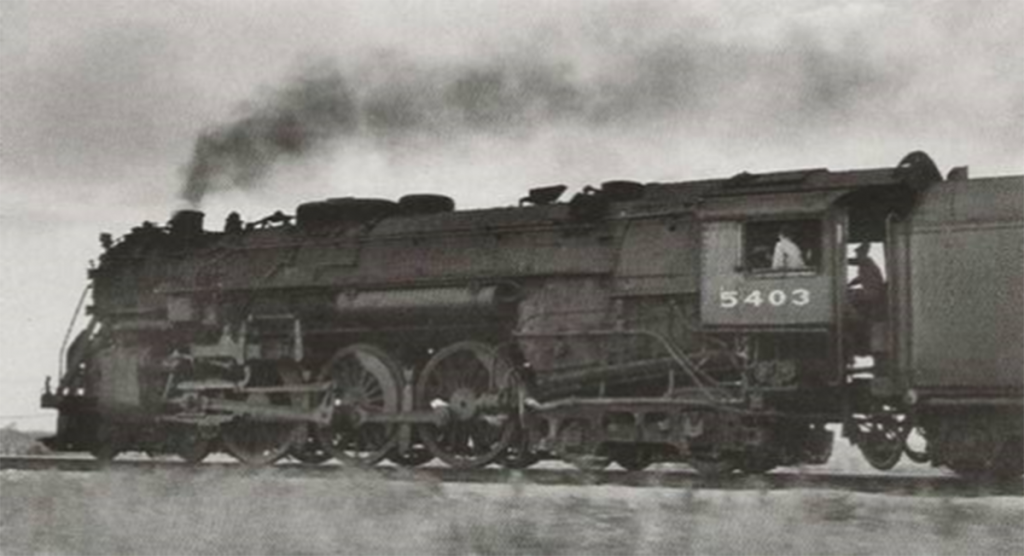
Credits: Photo of NYC Hudson #5403 by noted photographer, the late Phil Hastings as seen in Classic Trains, Summer 2014. Notice how Hastings managed to get a silhouette of the engineer, usually unseen in pictures of the left side. Text by Robert S. McGonical, Editor of Classic Trains, used verbatim. Bob’s right, other than a short visit in the cab of UP’s excursion locomotive #844 in the Summer of 2004, I cannot recall the last time I’ve responded to “come-on-up.” In that same magazine were six accounts in “Tales from the Cab.” Great stuff.
Those three words – used almost universally by engineers to invite visitors into their locomotive cabs – are among the most thrilling a train-watcher can hear. They signal access, however temporary, to the most alluring of railroading’s inner sanctums.
Although we may also be drawn to other places, some that reveal even more about how a railroad functions – dispatcher’s office, caboose, boardroom, backshop, interlocking tower – none of these matches the engine cab for its combination of public visibility, crew-only exclusivity, and sheer excitement.
Spend enough time around the railroad, and circumstances eventually tend to result in invitations to visit, or even ride in, engine cabs. For most of us, these are rare glimpses into a realm to which we’ve been attracted since childhood. Memories of these occasions stand like trophies on our mental mantelpiece.
Today, an increased emphasis on safety and security are threatening to make those “Come on up” moments extinct. In any case, the cab experience for crews in vastly different now” steam locomotives are gone, employees are fewer, equipment is more uniform. – Gary Ostlund
Hats are in and will be at the February meeting.
The cost is 10.00 per hat and I (Bill Farrell) will take check or cash. Members may purchase as many hats as they would like, we bought extra.
By the way the hats look very good in gray with the club logo on them.
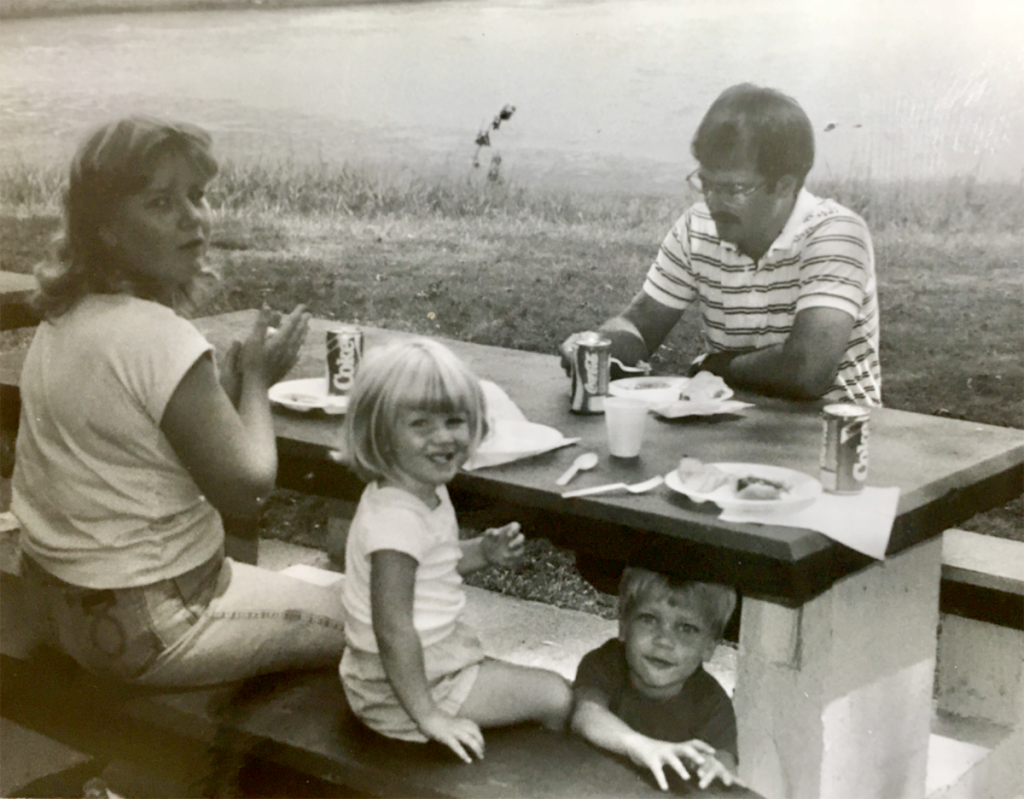
Keith Kittinger & family. Pre-CSX safety picnic. Madisonville City Park. Aug. 1985.
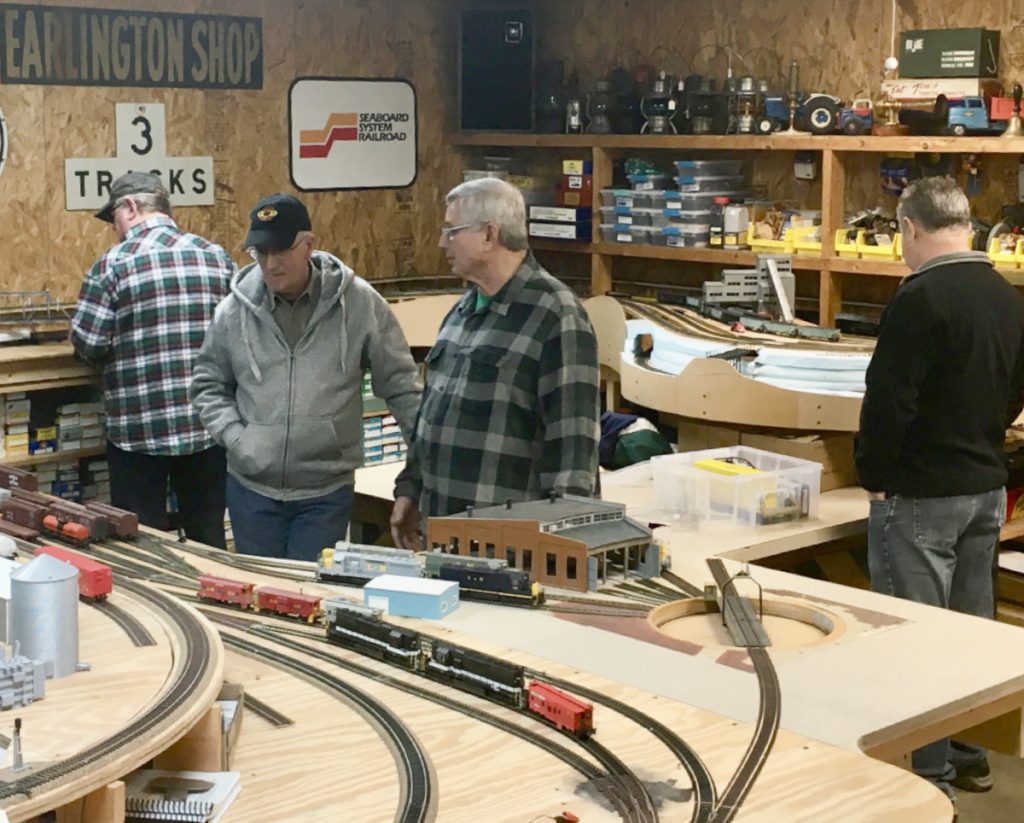
Chapter members enjoy some fellowship and bull talk at the Kittinger’s last week.
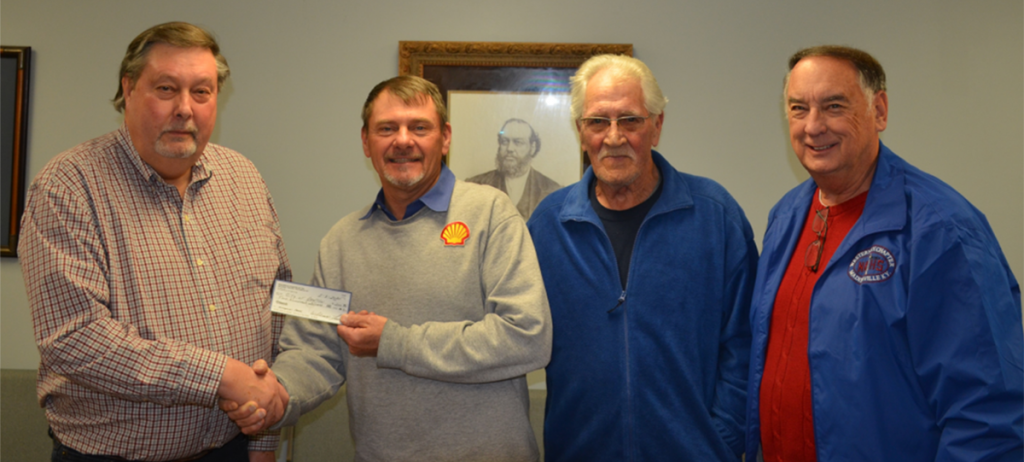
By Bill Farrell, Chapter Treasurer
On Thursday the 6th of February, Ricky Bivins and Bill Farrell drove to Crofton, Kentucky to make a presentation of two hundred dollars. These funds were presented to the Crofton City Council to be used for their War Memorial Park. If you have never been to this small community alongside of the CSX track in Northern Christian County at night, you should. This community is on the upswing with new businesses and civic improvements all along highway 41. The most noticeable is the new War Memorial Park which was completed about eighteen months ago. If you drive through at night you can’t miss it, clean, neat, and all lite up.
After we made the presentation of the check, we were invited to say a few words on behalf of our chapter and NRHS. Ricky did a great job of thanking their city council for all they do in allowing the chapter to have our annual picnic on Crofton City property each fall. One of the biggest assets we get is, the use of the restrooms in city hall. Mayor Danny Lacy and the entire city council were very appreciative of the check and made it known that the Western Kentucky Chapter members were always welcome to the City of Crofton.
An idea was brought forth to the members of their council that were present. The idea of a small railroad museum dedicated to the preservation of L&N and the CSX railroads. It was pointed out that the city of Crofton was in a prime location for a venue of this type. The fact that the city is divided by the main line of CSX makes it a perfect location for a museum and “railfanning”. We pointed out that I-169 is just three quarters of a mile from downtown Crofton. Spring, summer and fall would be perfect for tourism in this little North Christian community. The Western Kentucky Chapter members have enough L&N, and CSX artifacts that we could fill most any building they might want to use. Of course, any item used in the museum would be on loan by the owner. We offered our assistance in this effort if the city wanted to explore the possibilities in the future.
As a group we talked for about twenty-five or thirty minutes. All people present seemed very interested in a project of this nature. Ricky and myself pointed out the possibilities of obtaining money for such a project through local and federal grants. At one point I turned to Ricky and said “we have to leave; we are using up all their council meeting time”. Before leaving Mayor Lacy brought up an idea of having a structure erected that would resemble the old Crofton depot so people could sit and watch CSX rolling stock pass through their fair city.
As Ricky and I stepped out into the cold snow filled air, we too were excited about the possibilities for this small town. As we made our way through the parking lot, I couldn’t help notice the excitement in my comrade’s voice. I asked him would he be willing to work on such a project, of course the answer was, yes. As I turned my SUV south on highway 41, I couldn’t help to think about Mayor Lacey’s idea of building a permanent structure for people to sit under. Then it hit me, what about the old Sebree, Kentucky depot? What a perfect fit for Crofton, a station built by L&N brought back to life beside its former main line.
Just before Ricky and I departed for the evening I told him, “the ball is now in Crofton’s hands, let’s see what they do with it”.

Fairbanks-Morse Erie-built diesels lead the Milwaukee Road’s Olympian Hiawatha at Beverly, Wash., on Feb 11, 1949. The train is running as an extra because snow slides in the Cascade Range have put it about 20 hours late.
Operating rules state that any timetable-scheduled train, more than 12 hours late on the posted schedule, loses both right and class and can no longer proceed and further movement must be as “Extra,” or unscheduled train, authorized by Train Orders. Hence the white flags displayed high near windshield.
The train has just descended the 2.2 % grade down the Saddle Mountains, and the rear of this train is still over the Columbia River. Those mountains in the background are part of the Army’s Yakima Firing Range. No trains pass through Beverly, or cross the river today. The track is gone and the right-of-way is part of the Iron Horse State Park and the John Wayne Trail system. The bridge itself, the vital missing link in the cross-state trail system, has been closed to the public for safety concerns. Plans are being formulated to deck the surface and open for non-motorized use.
These shiny new FM units are opposed-piston diesel powered, an engine developed for marine use, mostly submarines. They produced tremendous horsepower proportion to their size, however, not considered wildly successful in rail use. They had a bad habit of cracked cylinder casings, and when that occurred you could see them coming for miles, just like a steam engine.
The late Wade Stevenson, a 35-year Milwaukee Road employee, worked in the Othello, Washington roundhouse most of those years. An avid photographer, he used public transportation and his rail-pass traveling the country recording history. He never married, never owned a car.
credits: Pix by Wade Stevenson, text assist by D. T. Sprau

Gary Ostlund sent this in as a Christmas greeting back in December.

Illinois Central Lanterns For Sale – Asking $100 each. Contact David Bratcher at 270-836-4973 – ¨ Price is negotiable!
If you have items for sale or looking for a particular item or items, Email me at billtrainthomas@gmail.com with the information and I will list it here.
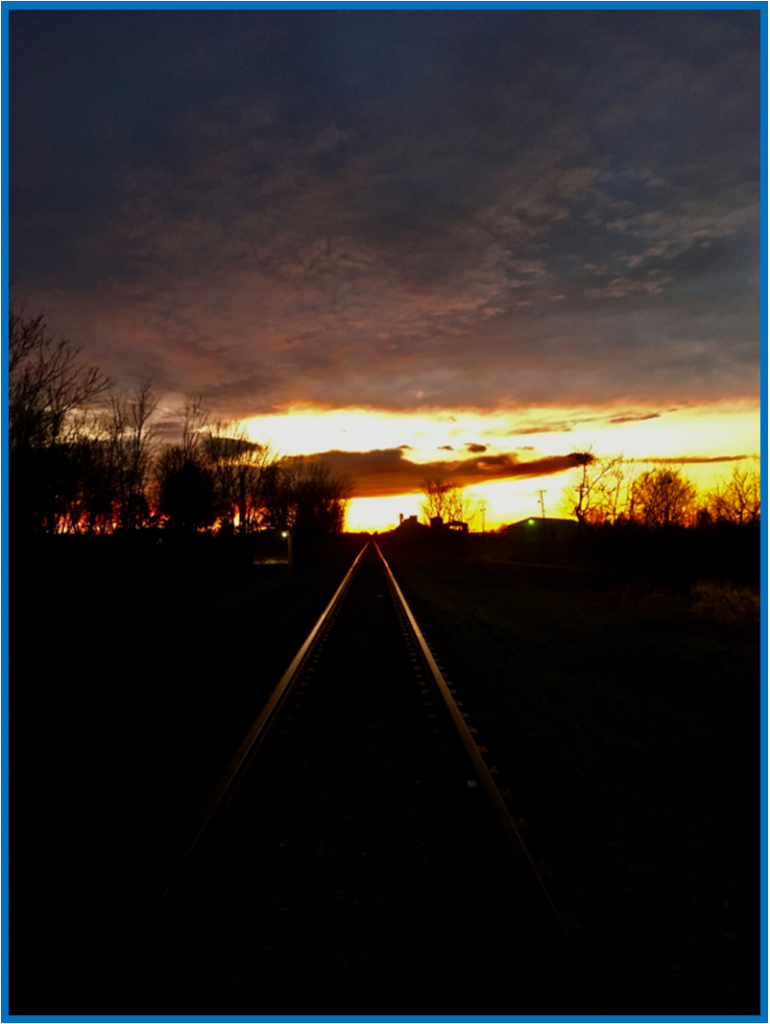
Sunrise on the Madisonville, Harford & Eastern at Hwy 85, Anton KY, December 22, 2018. – Photo by Ricky Bivins
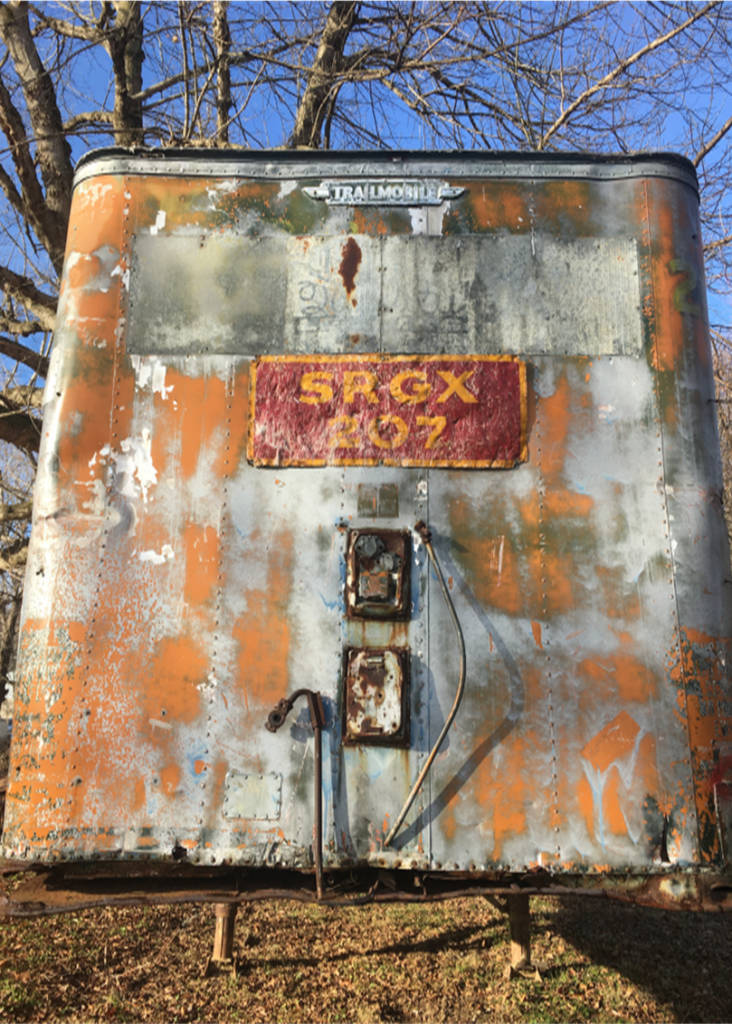

Needing storage space, I (Ricky Bivins) purchased a well worn highway trailer. By adding an official railroad sign from my collection, I now have an almost true to life piece of railroad equipment!